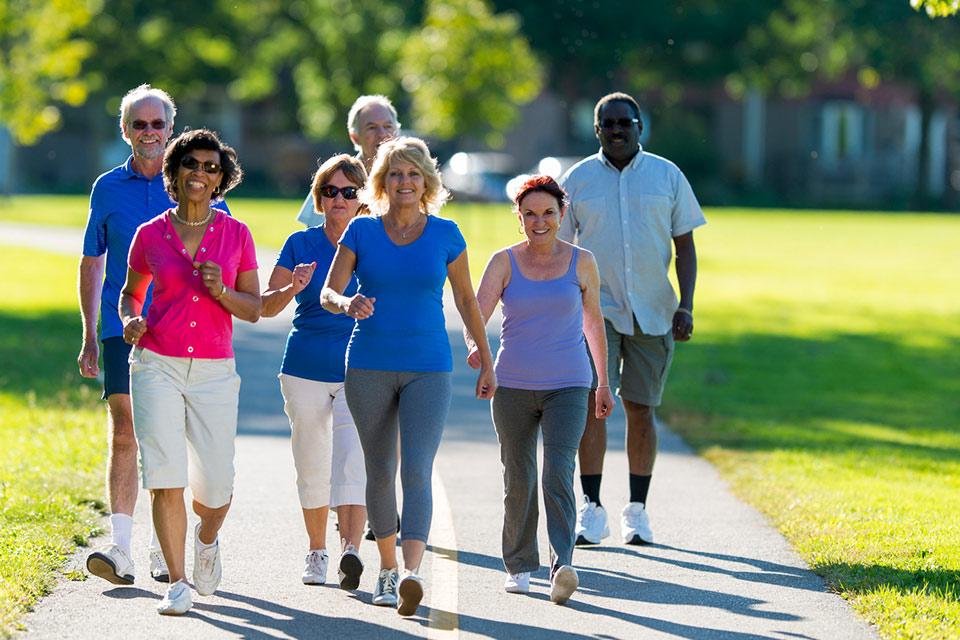When you begin a walking program, there are two things to keep in mind: stay hydrated and wear the right shoes. If you’re buying new walking shoes, it’s important that they’re comfortable and provide plenty of support. It’s a good idea to wear the same type of socks you plan to wear while walking. And, if you can, shop later in the afternoon, as feet tend to swell as the day goes on. Before you actually buy, walk around the store to ensure a good fit.

Cushioning
A newer shoe will provide more padding on the sole of the shoe because it hasn’t been worn down yet. (But keep in mind that even if a shoe doesn’t look worn, it may feel worn due to regular use.) The amount of padding on the bottom of a shoe is entirely up to your comfort. If you’re planning to run, look for a shoe that provides slightly more cushioning under the ball of the foot. Socks can provide a great cushion as well.
Flexibility and Support
To assess a shoe for flexibility, use both hands to hold the ends of the heel and toe. Now bend the toe upward toward the ceiling. The shoe should curve at the ball (where the foot ends and the toes begin) — not at the arch.
To assess a shoe for support, grasp the heel and toe again. Now, twist the heel away from you and the toe toward you. The shoe should provide some light to moderate resistance to this twisting.
A good walking shoe should have a snug fit without being tight. When walking down a hill, your toes should not touch the inside toe of the shoe. When walking on level or uphill surfaces, your heel should not lift off of the insole more than an eighth of an inch.
Everyone has different needs when it comes to walking shoes, so go by what feels best for you.
